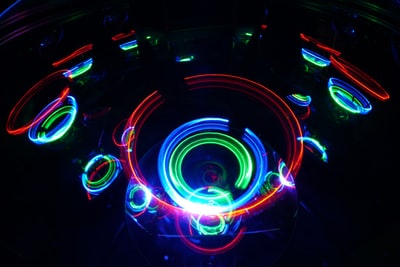
——————————————————
Splitting atoms

Nuclear fission takes place like this:
Uranium-235/plutonium-239 absorbs a neutron.
?
The nucleus splits up into two small nuclei.
?
This released two or three neutrons.
?
Energy is produced.
The neutrons released can be absorbed by other nuclei which makes them to split. This means that even more neutrons are released and even more nuclei can split. This is known as a chain reaction. In a nuclear reactor this process must be controlled to stop it happening.
——————————————————
Nuclear fusion

Nuclear fusion is used to release energy in the Sun and other stars. The different reactions involved is very complicated but basically it involves hydrogen nuclei joining together and forming a helium nuclei.